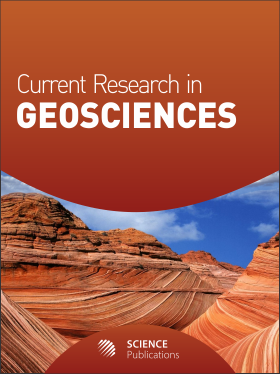Petrophysical Properties Distribution Modelling of an Onshore Field, Niger Delta, Nigeria
- 1 University of Port Harcourt, Nigeria
Abstract
This research is based on the modelling of petrophysical parameters distribution of an onshore oil field in Niger Delta. The methodology involves the construction of 3-D grids that represent the reservoir geometry, accompany by property modeling where the 3-D grids were populated with petrophysical properties (porosity, water saturation, net to gross ratio, facies and permeability). The objective is to construct a 3D-dimensional reservoir model that characterizes and evaluate reservoirs in an onshore oil field, Niger delta. Three-dimensional grid and geophysical logs of 4 oil boreholes were used to characterize the delineated reservoirs. Two lithologies and two reservoirs were delineated from the logs. The lithologies are sandstone and mudstone which are arranged in alternation representing the Agbada Formation of the Niger Delta. The calculated petrophysical parameters for the two reservoirs in the four wells were used for estimating the properties distribution in the reservoirs. The petrophysical properties estimation and distribution was done with inverse distance weighting of deterministic techniques of modeling. The calculated porosity values for the two reservoirs range from 0.061 to 0.30 with an average of 0.185. The permeability of the two reservoirs ranged from 110 to 2394 mD. The calculated water saturation and net to gross ratio of the two reservoirs range from 0.23-0.57 with an average of 0.4 and 0.44-0.87 with an average of about 0.61 respectively. The porosity, permeability, water saturation and net to gross ratio and facies models show uniform distribution within the reservoirs. From the models, it can be inferred that the reservoir properties within the central part of the field are very good. It is, therefore, advisable that wells should be drilled in the central region to investigate the presence of oil. The results of this study have shown the effectiveness of 3D reservoir modeling as a tool for understanding the spatial distribution of reservoir properties. The results can be used as a guide for evaluating future performance and production behavior of the reservoirs.
DOI: https://doi.org/10.3844/ajgsp.2017.14.24

- 7,083 Views
- 5,625 Downloads
- 13 Citations
Download
Keywords
- Petrophysical Properties
- Reservoir
- Modeling
- Deterministic
- Inverse Distance Weighting
